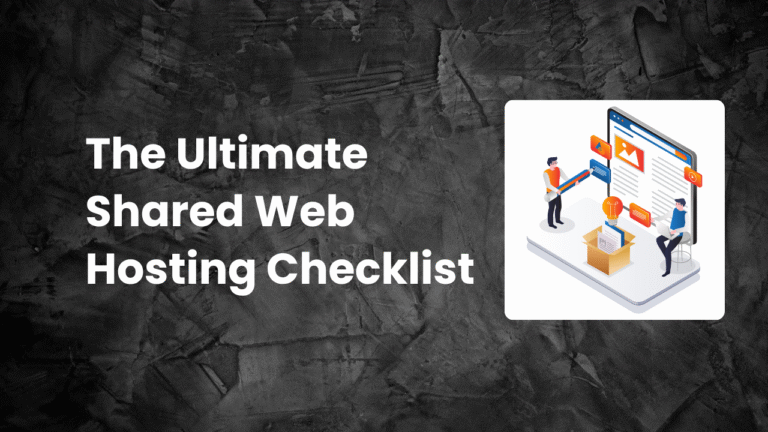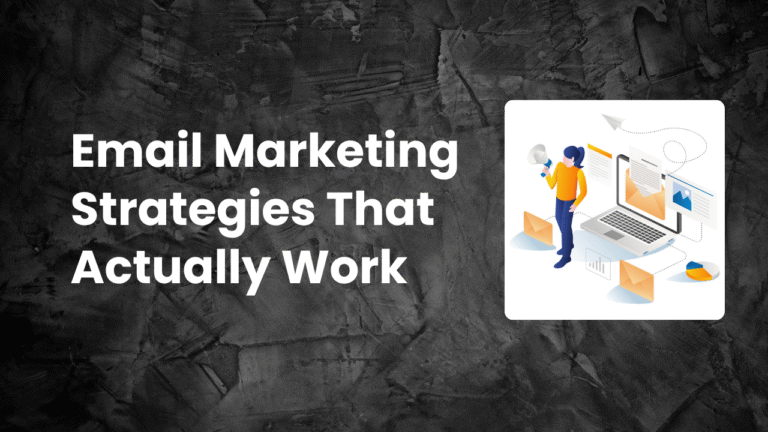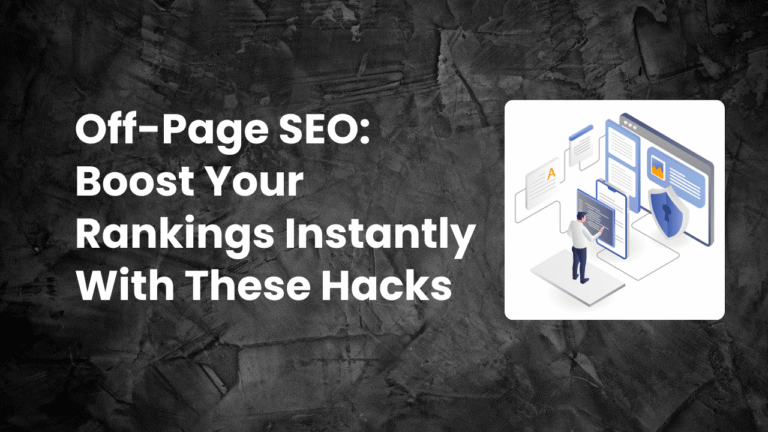Landing page copywriting is the hidden force behind every successful online campaign. Behind every “Sign Up Now,” “Download Free,” or “Start Your Trial” button that you’ve ever clicked is a string of words carefully crafted to guide your decision. These words didn’t happen by accident. They were written with purpose. And when done right, they can be the difference between a visitor and a customer.
You may have the best product, a stunning design, and even a fast website—but without persuasive copy, none of it matters. Great landing page copy doesn’t just fill space. It sells the story, communicates value, addresses doubts, and moves people to act.
According to a study by Unbounce, copy accounts for 93% of why people convert or bounce (Unbounce Conversion Benchmark Report). That means your headline, subheadings, value propositions, and call-to-action buttons play a bigger role than visuals or even the offer itself.
Another report by Nielsen Norman Group confirms that users typically read only 20% of the text on a landing page, which means your words have to work hard, fast, and strategically (Nielsen Norman Group).
In this article, you’ll learn everything you need to know about landing page copywriting—from crafting magnetic headlines to writing conversion-driven body copy, all the way to compelling calls to action. If you’ve ever wondered why some pages convert like crazy and others flop, this comprehensive guide will show you why.
What Is Landing Page Copywriting and Why It’s So Important
Landing page copywriting is the process of writing persuasive, action-focused content that appears on a standalone page designed to achieve a single objective. That objective could be collecting email addresses, selling a product, promoting a webinar, or anything else that requires a user to take a specific action.
But landing page copywriting is not just regular writing. It’s not blogging. It’s not academic. It’s not corporate-speak. It’s strategic writing that speaks directly to the reader’s desires, frustrations, and motivations.
The goal of landing page copy is to reduce friction. To eliminate confusion. To create clarity. To connect emotionally while convincing logically.
Landing page visitors don’t read out of curiosity. They read because they’re looking for a solution. Your copy should help them believe that solution is right in front of them—and that taking action is the next best step.
The Psychology Behind High-Converting Copy
To write landing page copy that actually works, you need to understand how people think, not just how they read.
Human beings make decisions emotionally and then justify them logically. That’s why good copy taps into fear, joy, envy, curiosity, or relief—then reinforces those emotions with rational proof.
If your visitor feels a problem, you need to amplify that pain. If they want a transformation, you need to paint that picture. If they have doubts, you must address them before they ask. Every part of your copy—from headline to CTA—should be written with empathy and intent.
This means you need to know your audience deeply. What keeps them up at night? What are they trying to achieve? What have they tried that didn’t work? Once you understand that, your copy becomes a conversation, not a sales pitch.
The Headline: Your First and Most Important Hook
The headline is the first line of copy people read—and in many cases, the only line. According to Copyblogger, 80% of visitors will read your headline, but only 20% will read the rest of the page (Copyblogger). That means your headline must work hard, fast.
A great headline does one or more of the following:
- Communicates a benefit
- Solves a problem
- Sparks curiosity
- Builds urgency
It should be specific, simple, and clear. Avoid jargon, clever puns, or empty claims. Clarity beats cleverness every single time.
Instead of “Revolutionize Your Workflow,” say “Double Your Productivity in 7 Days—Without Working Longer Hours.” The second is tangible, outcome-focused, and emotionally charged.
Remember, the headline is your bait. If it doesn’t catch attention, the rest of your copy won’t even get a chance.
The Subheadline: Reinforce, Expand, and Tease the Solution
Right below the headline, your subheadline should deepen the message. Think of it as the supporting actor—it doesn’t steal the show, but it helps the lead shine.
Your subheadline should explain or expand on the headline in a way that builds interest. It should answer the reader’s next question: “Okay, tell me more.”
For example, if your headline is “Lose 15 Pounds Without Cutting Carbs,” your subheadline might be “Discover the 3-step method nutritionists use to burn fat while still enjoying your favorite meals.”
You’ve got the attention. Now give them a reason to keep reading.
The Opening Paragraph: Speak to the Problem, Offer Hope
The first few lines of body copy are make-or-break. You’ve gotten the click, and your visitor is on the page. Now you need to show them they’re in the right place.
Start by acknowledging their pain or goal. Show empathy. Let them know you understand. Then, transition to offering a glimmer of hope—a potential solution.
Avoid introducing yourself or your product right away. Focus on them. Their struggle. Their story. Once they feel seen and understood, they’ll be more open to hearing what you have to say.
For example:
“You’ve tried every productivity app out there. But no matter how many checklists you make, your to-do list keeps growing. It’s frustrating, exhausting, and downright discouraging. That’s why we created FocusMate—a new approach to work that finally puts your time back in your hands.”
This kind of copy builds trust. It creates a connection. And it prepares the reader to say “yes” to your offer.
Building Desire With Features and Benefits
One of the biggest mistakes in landing page copywriting is confusing features with benefits. Features describe what something does. Benefits describe what it means for the user.
Let’s say you’re selling a time-tracking tool. A feature might be “Real-time activity monitoring.” But the benefit is “Know exactly where your time goes—so you can get more done in less time.”
Benefits make the reader feel something. They help the visitor imagine a better version of their life, business, or routine.
Your job is to translate every feature into an outcome the user cares about. Don’t just describe what the tool does. Show how it changes lives.
Use simple transitions like:
- “Which means you can…”
- “So you never have to…”
- “Helping you finally…”
These phrases help bridge the gap between functionality and transformation.
Overcoming Objections Before They Arise
Every visitor comes with questions, doubts, and silent objections.
- “Will this really work for me?”
- “Is it worth the money?”
- “What if I don’t like it?”
- “Is this legit?”
You need to answer these concerns before they ask them—and you need to do it naturally within your copy.
Use proof, clarity, and reassurance. That might include:
- Testimonials from people just like them
- Money-back guarantees
- Data and research
- Security or privacy assurances
Think of objections as opportunities. When you handle them well, you build trust and reduce hesitation.
The Call to Action: Make It Clear, Direct, and Actionable
Your CTA is not just a button—it’s the climax of your landing page copywriting.
It needs to be clear, benefit-driven, and emotionally aligned with everything that came before it. Don’t use vague terms like “Submit” or “Click Here.” Tell them exactly what they’re getting.
Instead of “Download Now,” try “Get My Free Copy.” Instead of “Sign Up,” use “Start My Free Trial.” These small shifts put the focus on the user and make the action feel like a reward, not a chore.
The copy around your CTA matters too. Reinforce the value right before the button. If needed, include a line of reassurance like “No credit card required” or “Takes less than 60 seconds.”
Placement is key. Don’t make people scroll forever. Your CTA should be visible early, then repeated after reinforcing copy further down.
Using Social Proof to Amplify Credibility
Words are powerful—but they’re even more powerful when they come from other people. Social proof is one of the most persuasive elements you can include in your landing page copy.
Customer reviews, testimonials, user counts, logos of big clients, or even ratings all help reassure visitors that your offer is trusted.
The best social proof is specific. Instead of “Great service,” a better testimonial says “I grew my email list by 312% in just one month thanks to this tool.”
If possible, include names, photos, or even videos to enhance credibility. Make sure the testimonials address common fears or reinforce benefits you’ve already mentioned.
Social proof doesn’t just support your message—it validates it.
Creating Urgency and Scarcity Without Being Pushy
People need a reason to act now, not later. Urgency and scarcity are powerful motivators, but they need to feel genuine—not gimmicky.
Use language that emphasizes limited time, limited availability, or upcoming deadlines. Phrases like:
- “Only 3 spots left”
- “Offer expires midnight tonight”
- “Get early access before it closes”
Timers, countdowns, or early-bird offers can be effective—if they’re authentic. Never fake scarcity. Users are smart. If they catch you lying, you lose trust forever.
Urgency gives your call to action energy. Scarcity gives it weight. Together, they drive action when everything else has worked.
Editing and Refining for Clarity and Power
First drafts are rarely great. The magic of landing page copywriting often happens in the editing.
When you revise, look for fluff, jargon, or anything that doesn’t serve the core goal. Shorten sentences. Strengthen verbs. Cut unnecessary words. Add emotional language. Improve transitions.
Read your copy out loud. If it doesn’t sound natural, rewrite it. Better yet, have someone from your target audience read it. Do they understand it? Do they feel motivated? Do they trust you?
Every word should earn its place. Every sentence should move the reader closer to action. That’s the standard.
A/B Testing Your Copy to Maximize Conversions
Even brilliant copy can be improved. That’s why top marketers test everything.
A/B testing lets you compare two versions of your landing page to see which performs better. You can test:
- Headlines
- Subheadings
- CTA button text
- Testimonials
- Paragraph order
- Benefit statements
Sometimes the tiniest tweak can lift conversions dramatically. Don’t guess—measure.
Tools like Unbounce, Instapage, and Google Optimize make testing easy. Set a hypothesis, run the test, gather results, and iterate. Optimization is never one-and-done. It’s an ongoing process of discovery and refinement.
Conclusion: Landing Page Copywriting Is a Skill You Can Master
You don’t need to be a genius writer to succeed at landing page copywriting. You just need to understand people, focus on outcomes, and write with clarity and empathy.
Every high-converting landing page has one thing in common: It communicates the right message to the right person at the right time.
This guide has shown you how to do just that—from powerful headlines and emotional benefits to trust-building proof and bold CTAs. Whether you’re writing copy for your own product, a client, or your marketing agency, the principles remain the same.
Practice. Test. Improve. And always remember: behind every click is a human being. Speak to them like one, and your copy will convert.





